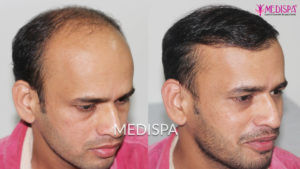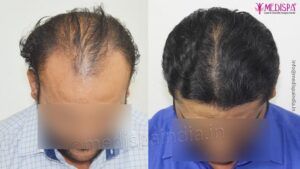
Hair loss is upsetting for both men and women, but regrettably, in our culture, women are also discriminated against based on their appearance. Therefore, hair loss in women may be quite upsetting since baldness can be really hurtful to them. Their social and personal lives could be severely hampered.
Everyone wants a healthy scalp with strong, lustrous hair, yet regrettably some people struggle with hair loss. In the past, when males predominated the world, women were reluctant to seek out a remedy for hair loss and were left to suffer the emotional toll. But in the modern day, ladies stroll hand in hand and find appropriate solutions for issues like hair loss.
Loss of hair in women
Women experience hair loss just as often as men do, although it is undoubtedly less obvious in women. Male hair loss often results in baldness, but female hair loss typically manifests as hair thinning. The expansion of the partition that eventually results in a bald region is shown by the process of hair loss in females.
Genetics, hormonal disorders, systemic illnesses, trauma, and other factors including a history of cancer and chemotherapy are among the definitive reasons of hair loss. These causes have always contributed to hair loss, but the incidence has gone up due to a change in lifestyle, a poor diet, increasing pollution, and frequent use of styling products including chemicals and heated equipment.
Therefore, if you are losing more than 100 hairs a day, don’t forget to see a doctor about the problem since if you do so in the beginning stages, you may be able to identify the cause of your hair loss and possibly treat it with minimal harm.
What conditions make females more prone to hair loss?
Only a small number of females go through a phase of hair loss, and not all women lose their hair. The following conditions are favorable to hair loss in those females:
- Following menopause
- Following delivery
- Following radiation or chemotherapy
- Women who consistently utilize styling tools or products
- Ageing
What choices are there for treatment?
It is pointless to spend hundreds of dollars on cosmetics that promise to stop hair loss. Temporary remedies like wigs, extensions, patches, and artificial hairs may be helpful, but having to replace them frequently may be annoying. It won’t seem logical to include the outcomes.
There is evidence that medications can help women who are losing their hair. In order to halt hair loss and speed up hair growth, minoxidil, an over-the-counter lotion, is frequently used by ladies. Finasteride should not be used by females who are close to becoming pregnant because of some of its negative effects. However, given that recurrence has been observed following drug discontinuation, the permanence of the results may be questioned.
The most widely used kind of treatment for hair loss nowadays is hair transplantation, which continues to be the best and final hair loss remedy.
Due to Delhi’s status as the country’s capital and the availability of the top centres for hair transplant in Delhi, tourists interested in hair transplants are flocking to the city.
Hair transplant in females
Hair grafts are taken from a secure donor region and transplanted to the recipient’s bald area during a hair transplant. The precision and high level of sensitivity of hair transplant procedures are essential to their success.
Although there are differences between male and female hair transplant, the basic principles remain the same. The procedures for hair transplantation are described as follows:
- FUT hair transplant: A strip-like portion of tissue is removed from the donor site and subsequently separated into individual hair grafts using the FUT (Follicular Unit Transplantation, often known as the strip treatment) technique. These individual follicular units are then transplanted to cure the targeted bald patch. Each of these procedures is performed at high loop magnification to ensure that hair transplants live as long as possible and offer the greatest amount of coverage.
- FUE (Follicular Unit Extraction): This procedure involves the removal of individual follicular units using small, punch-like surgical instruments, which are then implanted at the recipient site. Under high loop magnification, this process, which entails removing hair transplants from the scalp while simulating their position under the skin, must be executed very carefully.
Females prefer no-shave hair transplants, which makes the procedure a bit more difficult. When you need to avoid shaving, tiny incisions are done at the recipient site to transplant the hair follicles. The transplanted hair follicles are placed while taking care of the existing hairs because they are susceptible to damage. Because of this, women spend more money on hair transplants than do men.
Does female hair transplantation actually work?
Yes, without a doubt, if the right choices are made, a female hair transplant is actually the most successful procedure for producing the best results. Among the advantages of hair transplantation are:
- This treatment just requires a single expenditure because the effects are permanent and last a lifetime.
- If the process is carried out by skilled hands, the results appear to be quite natural.
- The hair growth you experience following a hair transplant does not require any upkeep or medical attention. These hairs are yours, and they develop in the same manner as your other hairs.
- After the local anesthetic has been administered, you won’t even feel a pinch throughout this treatment.





